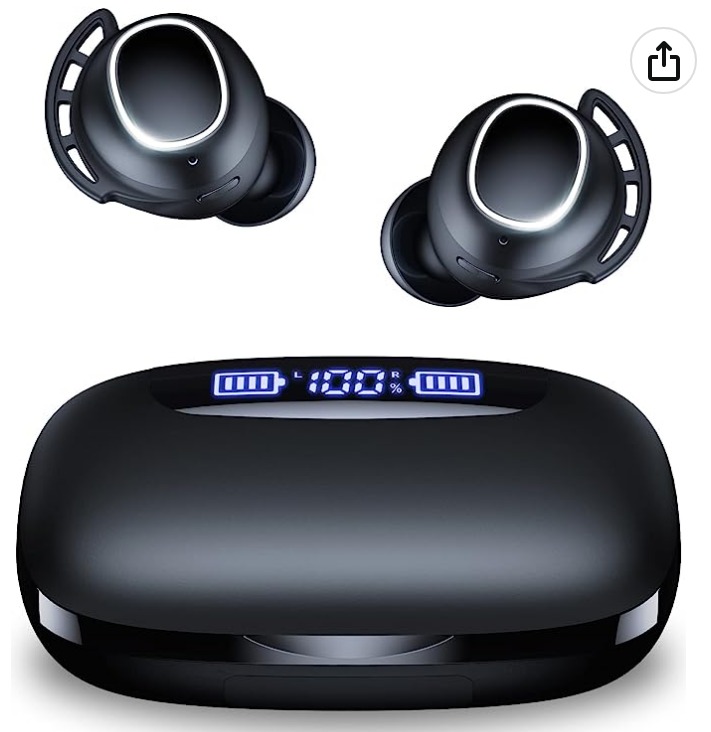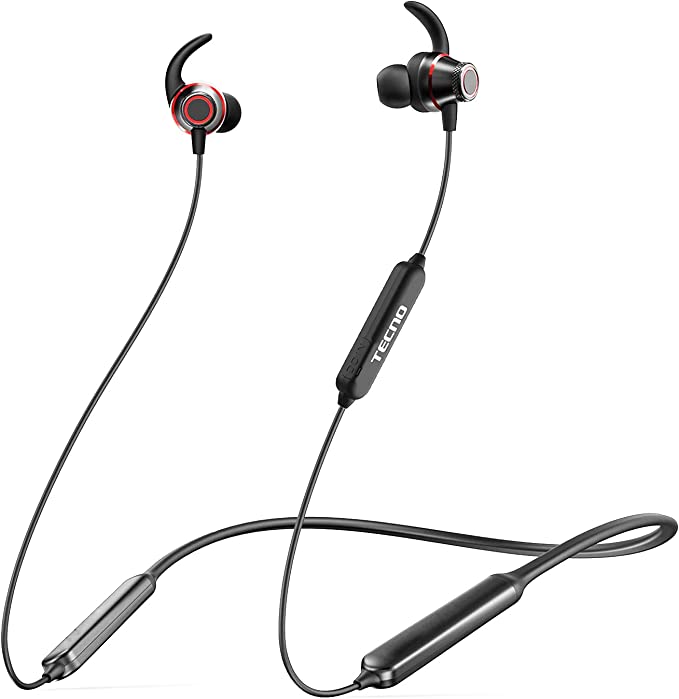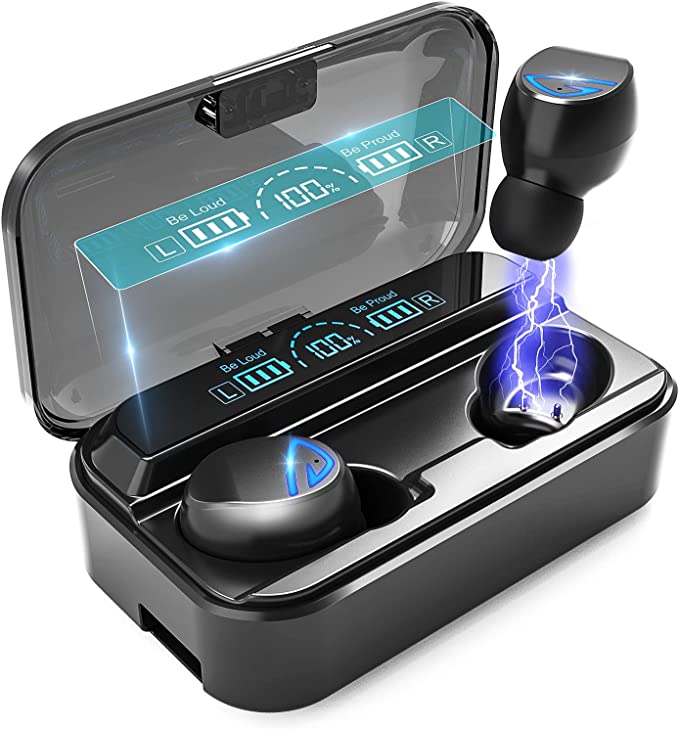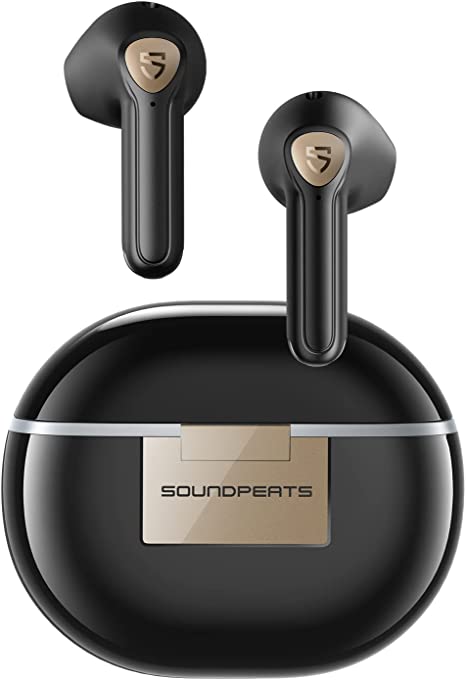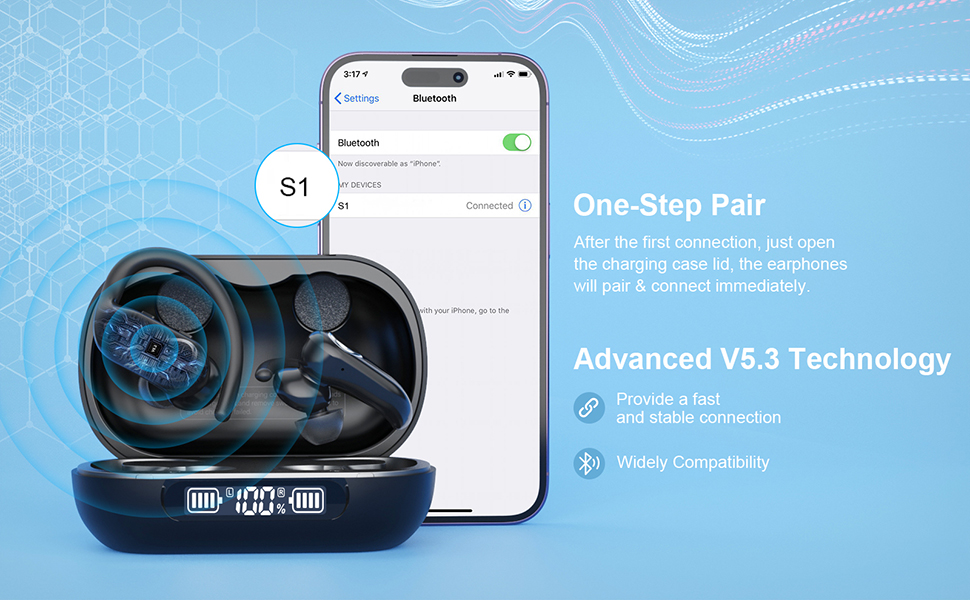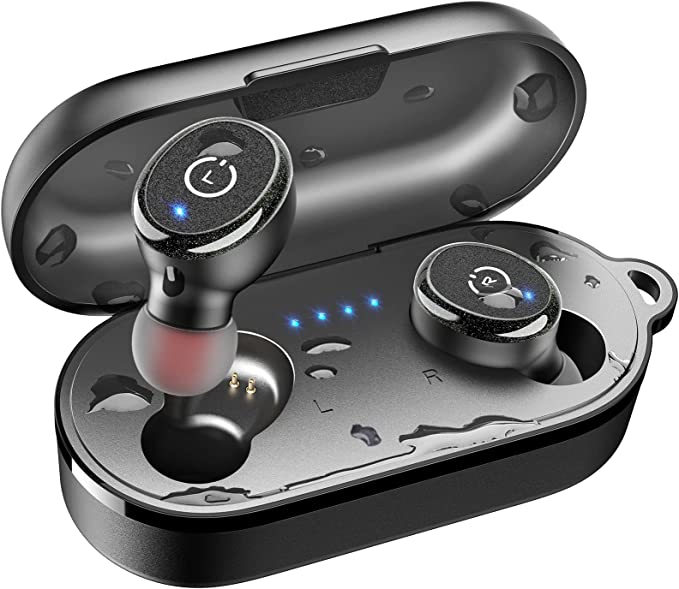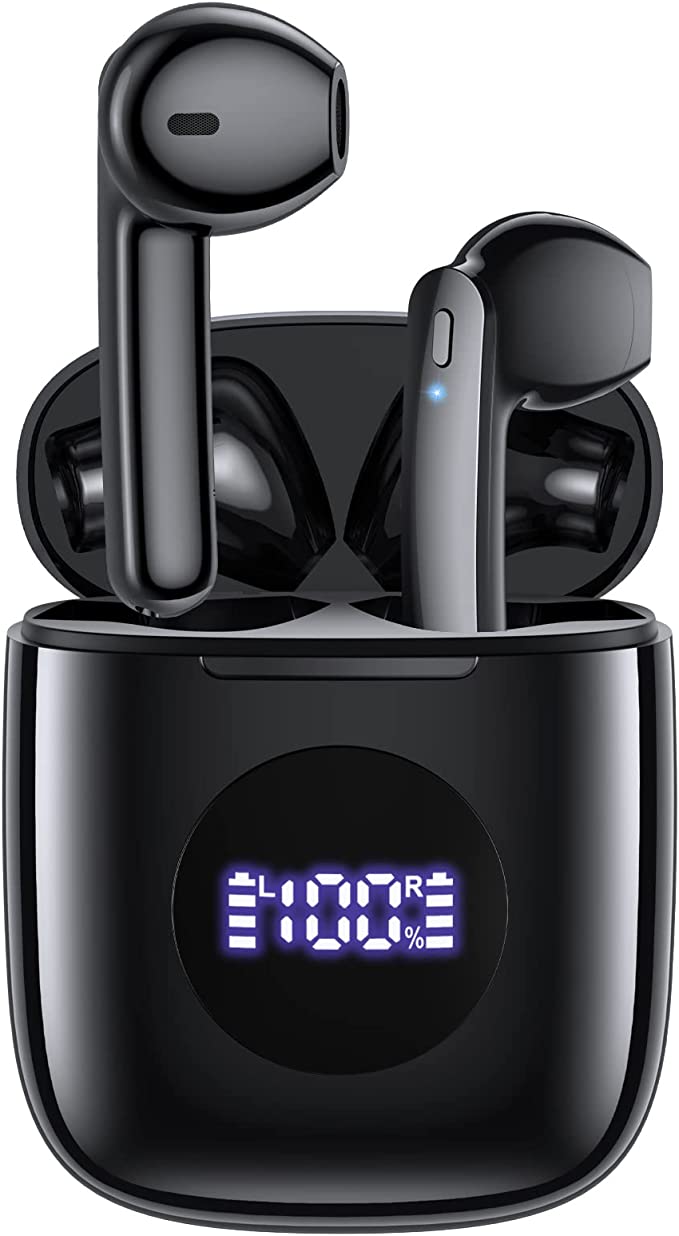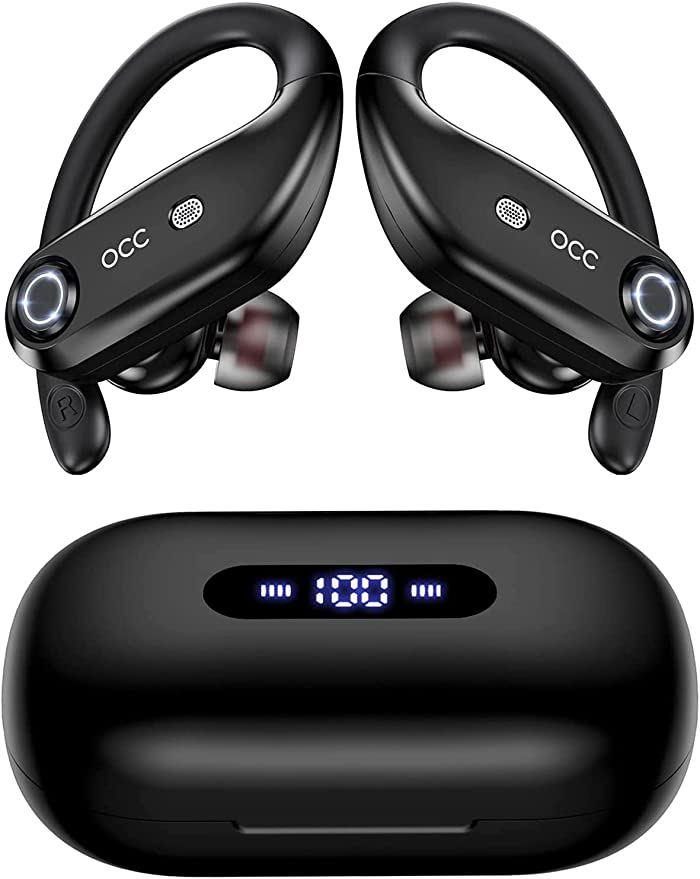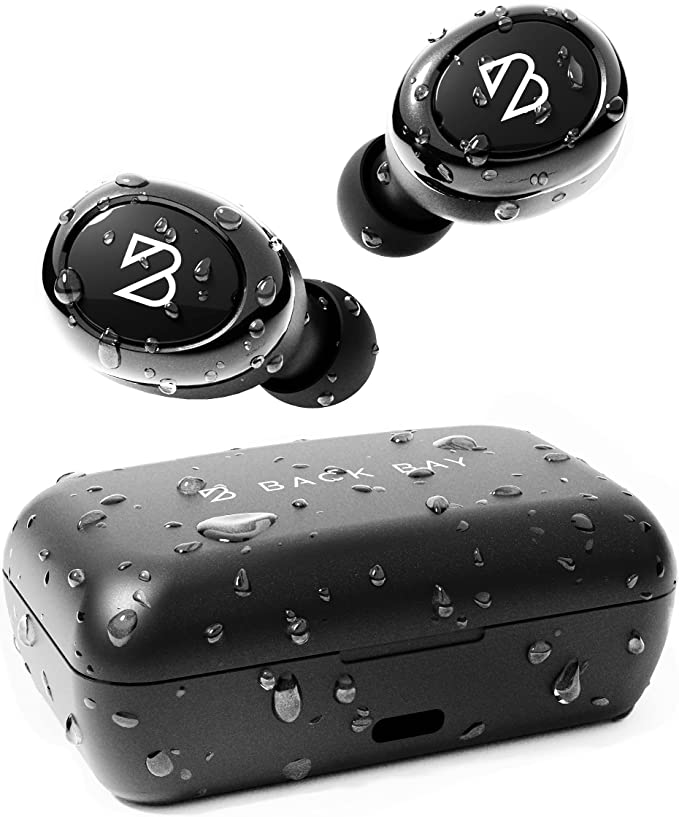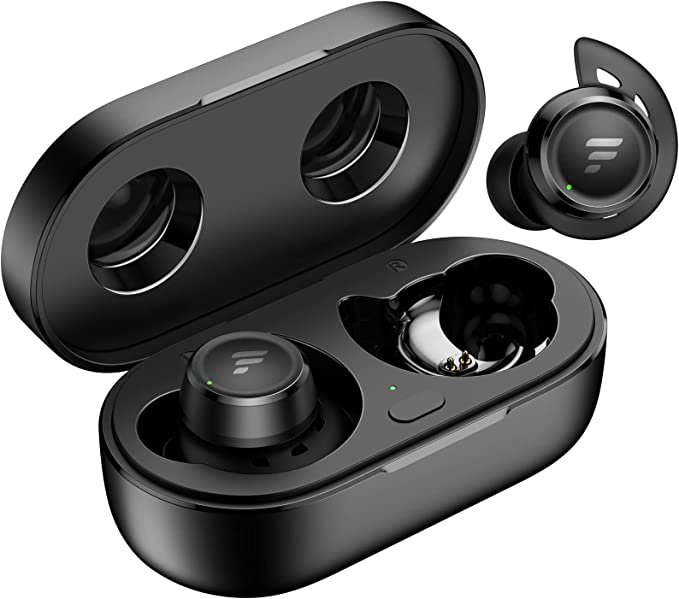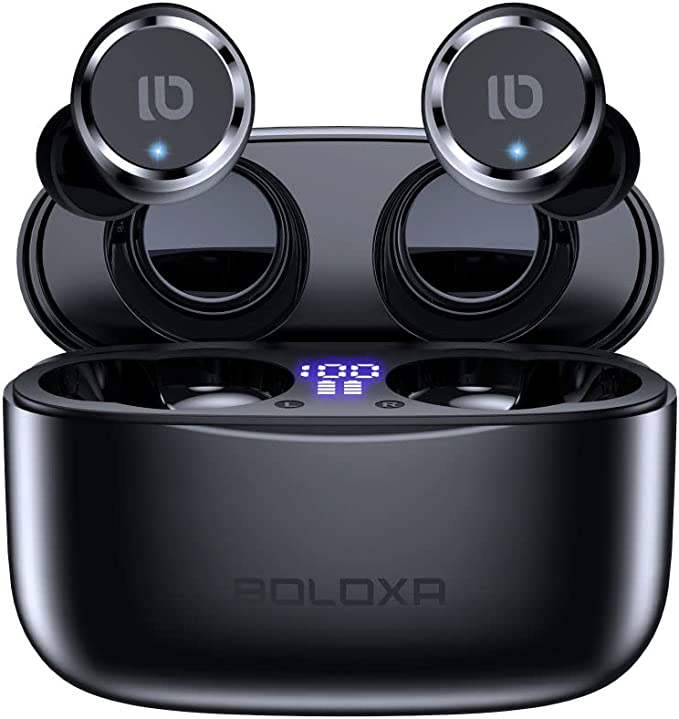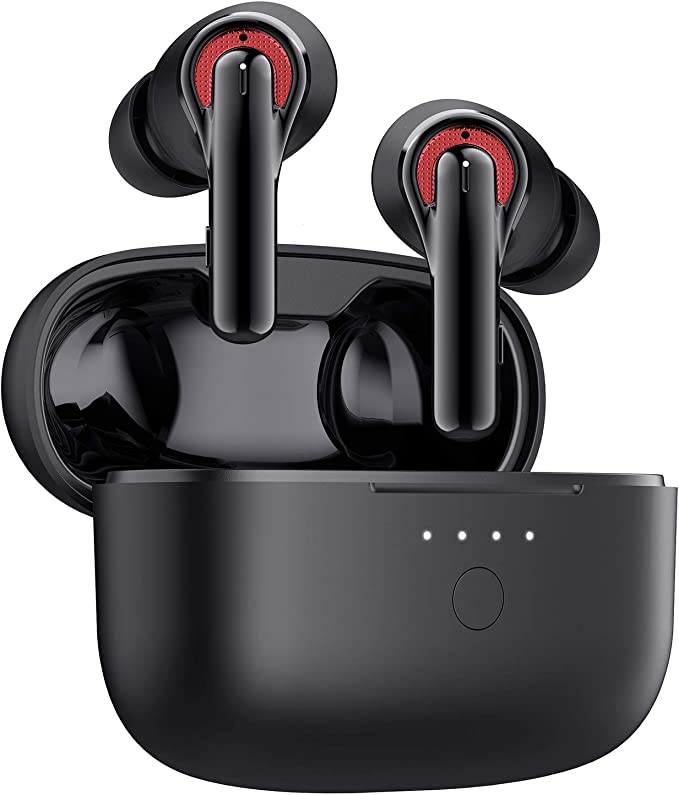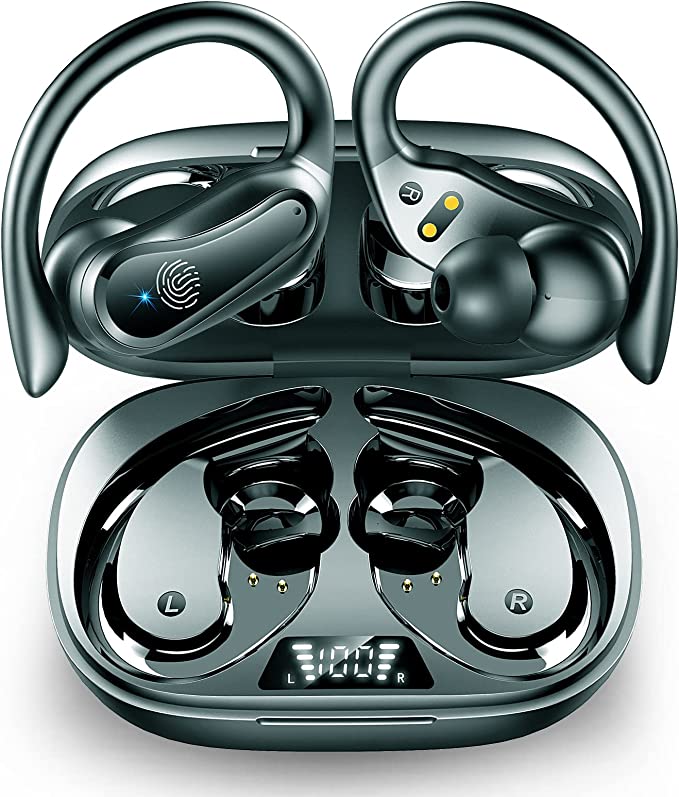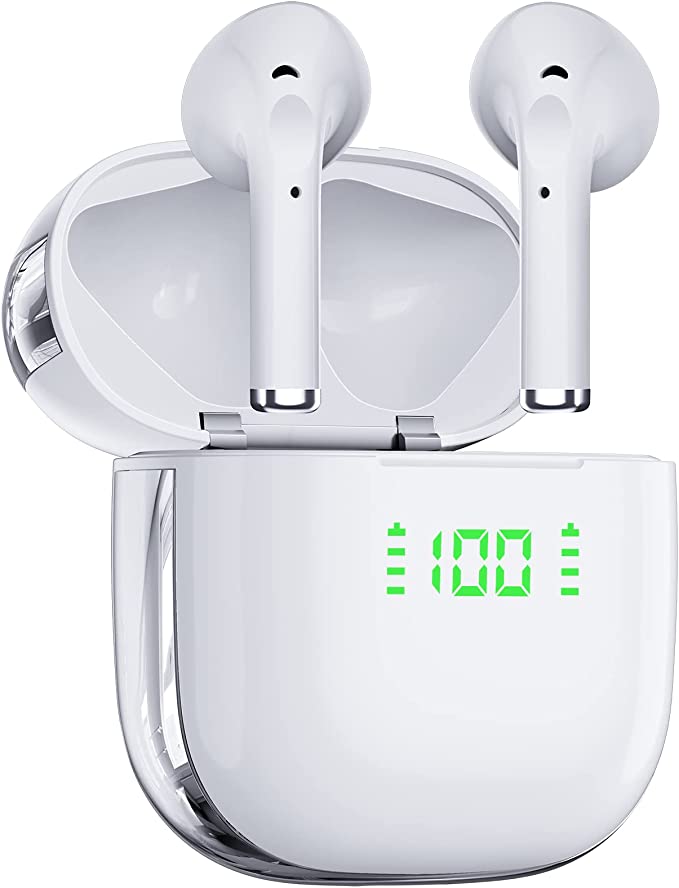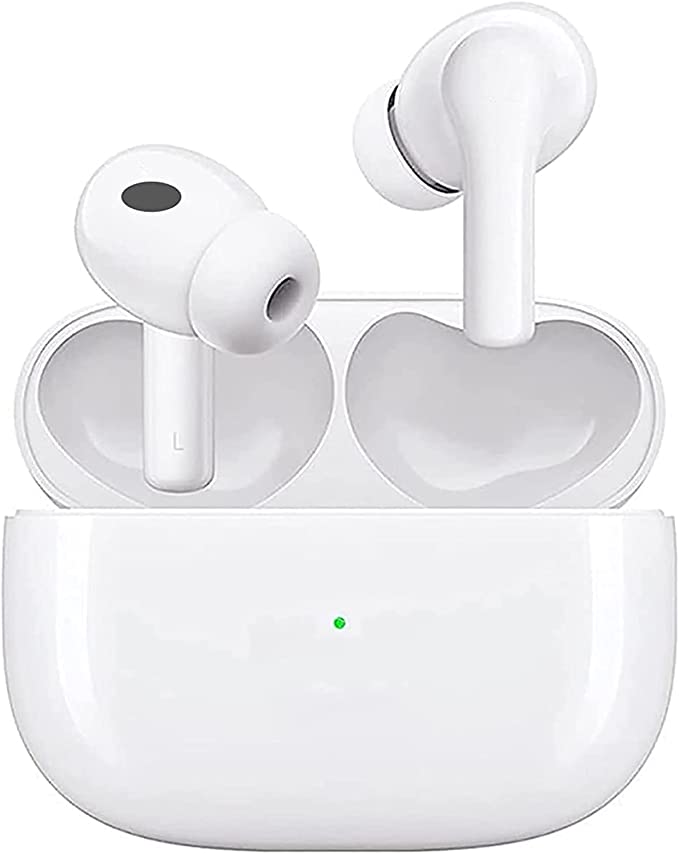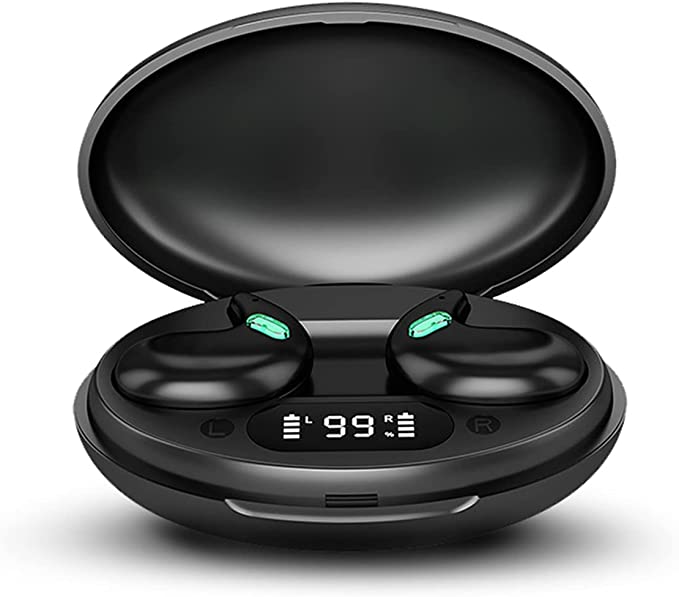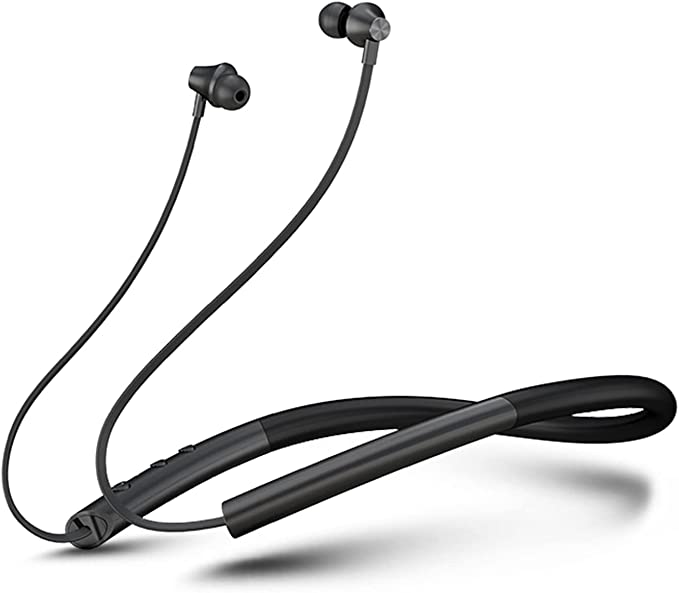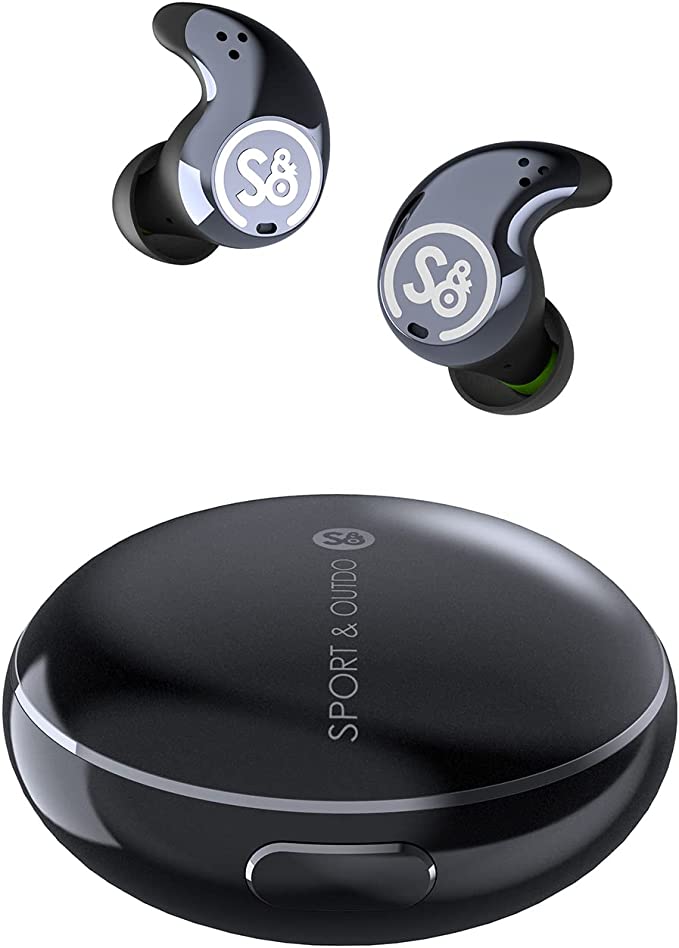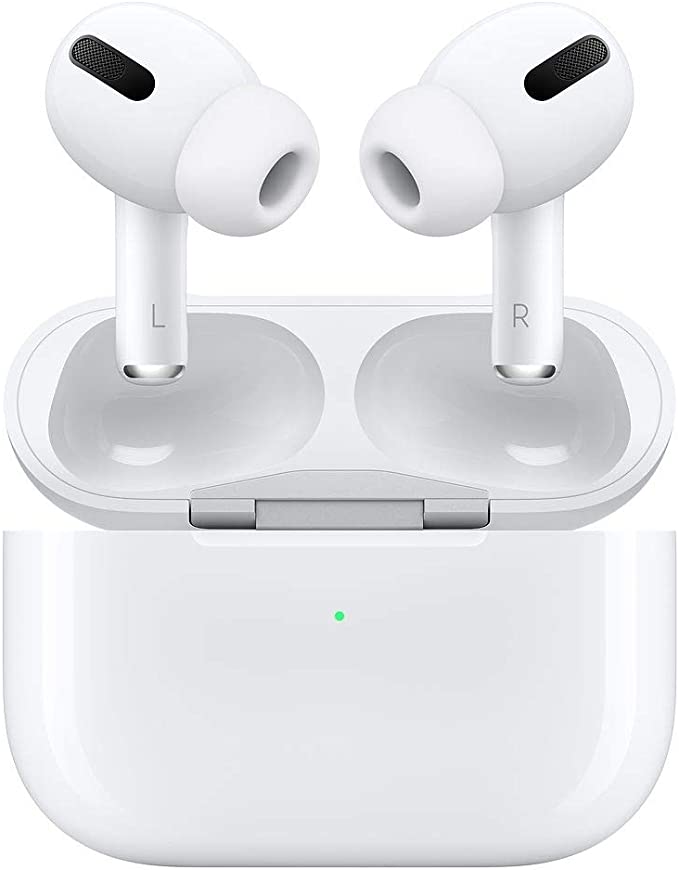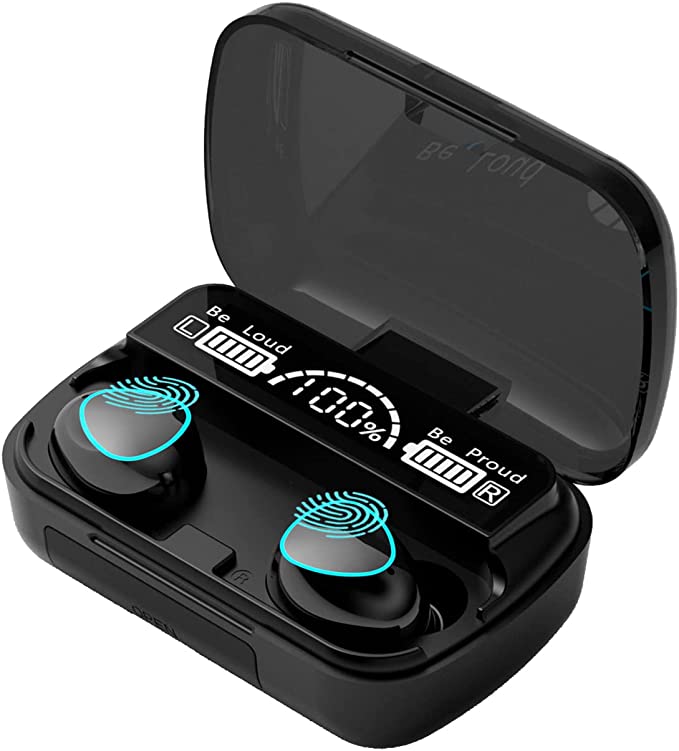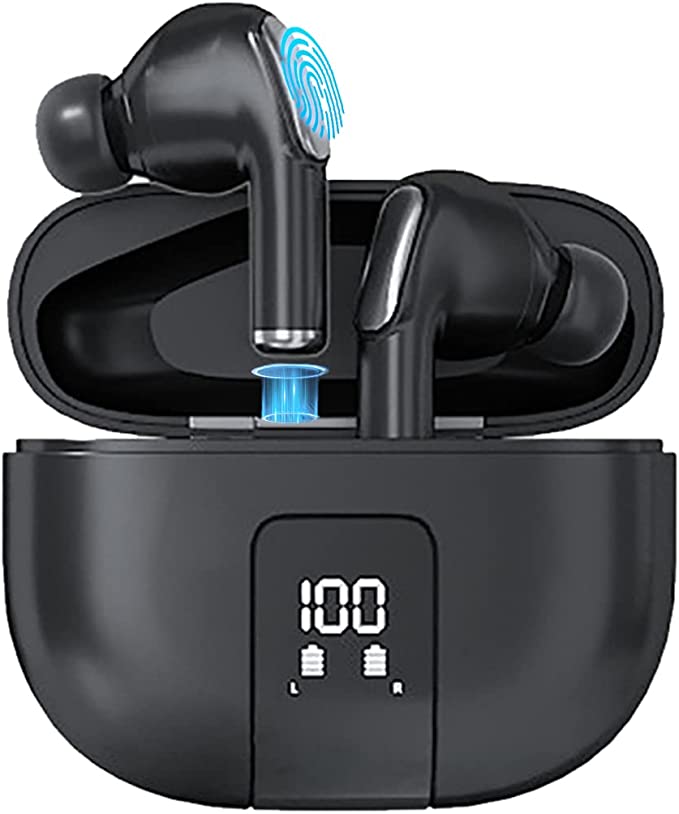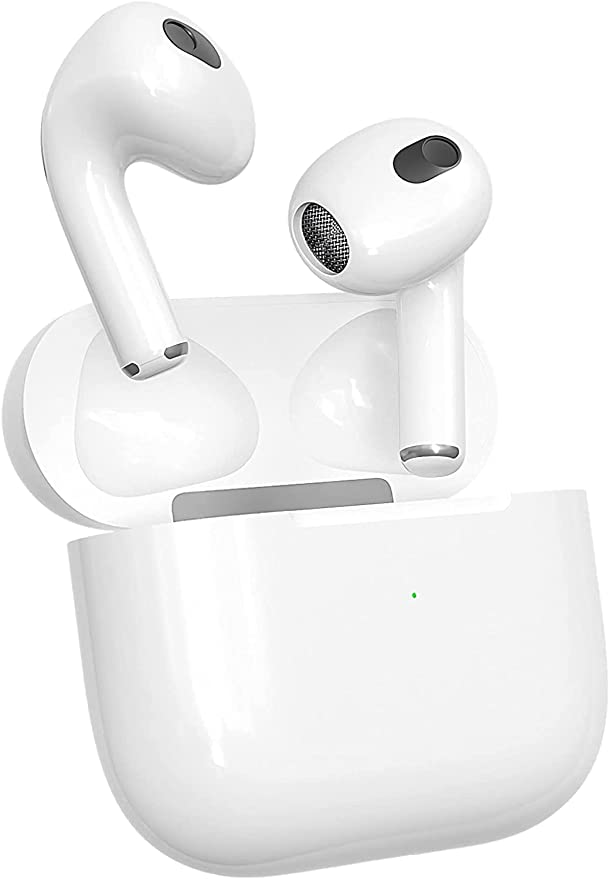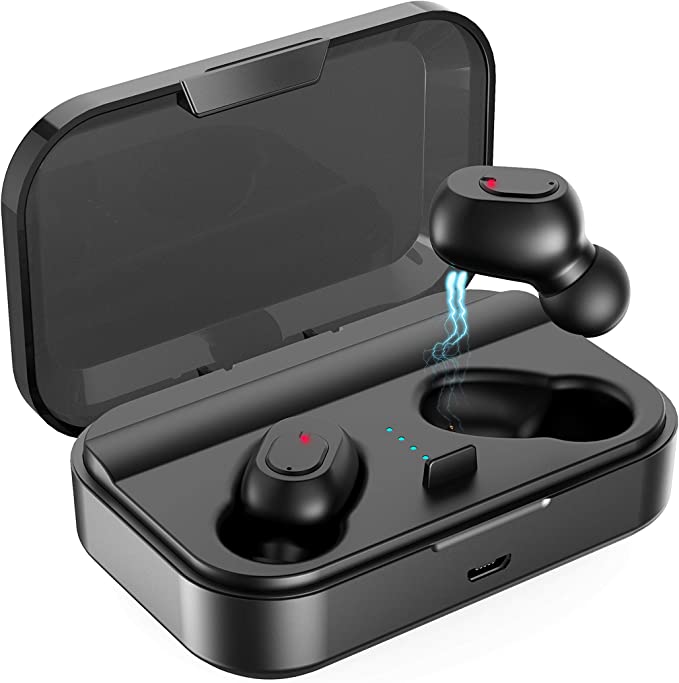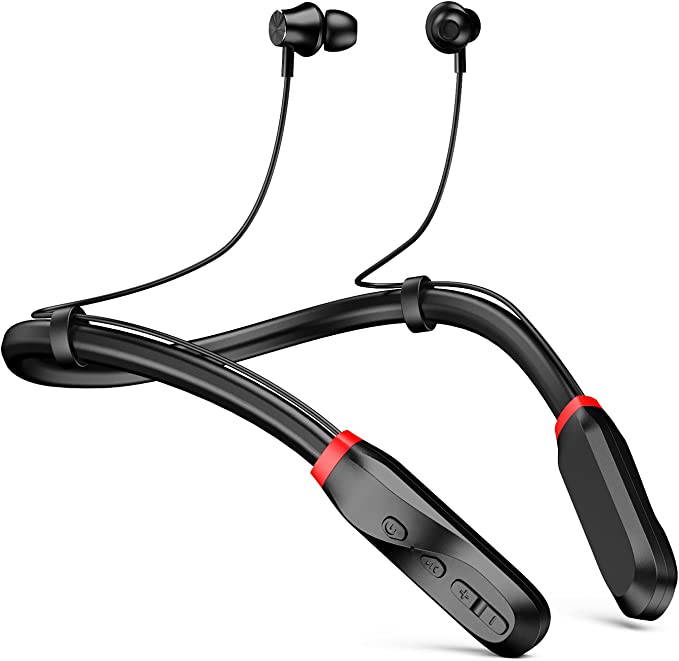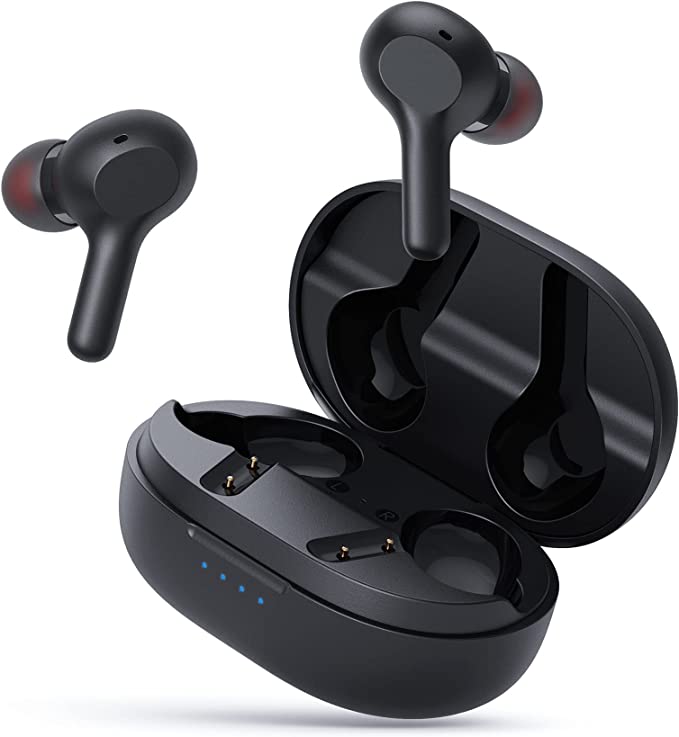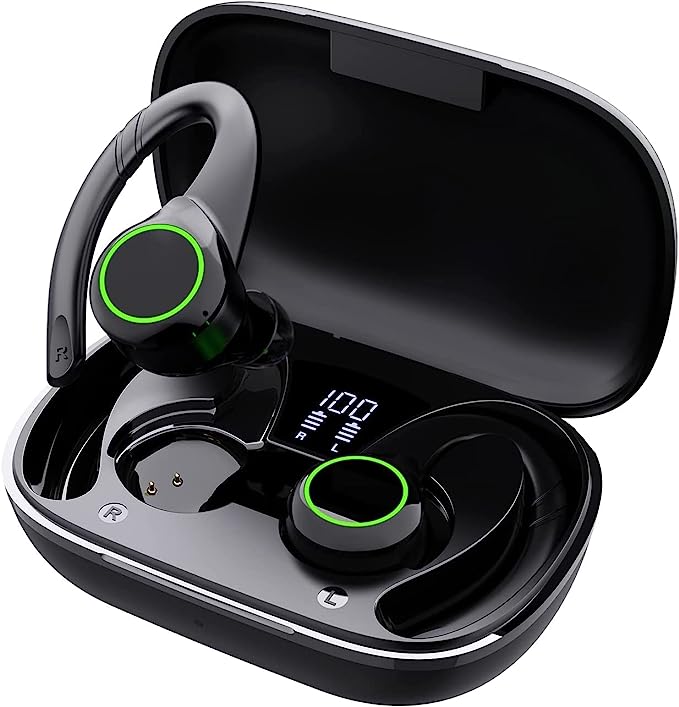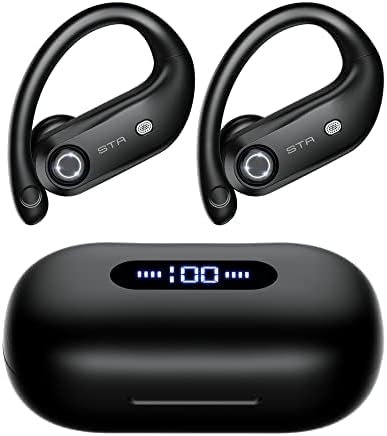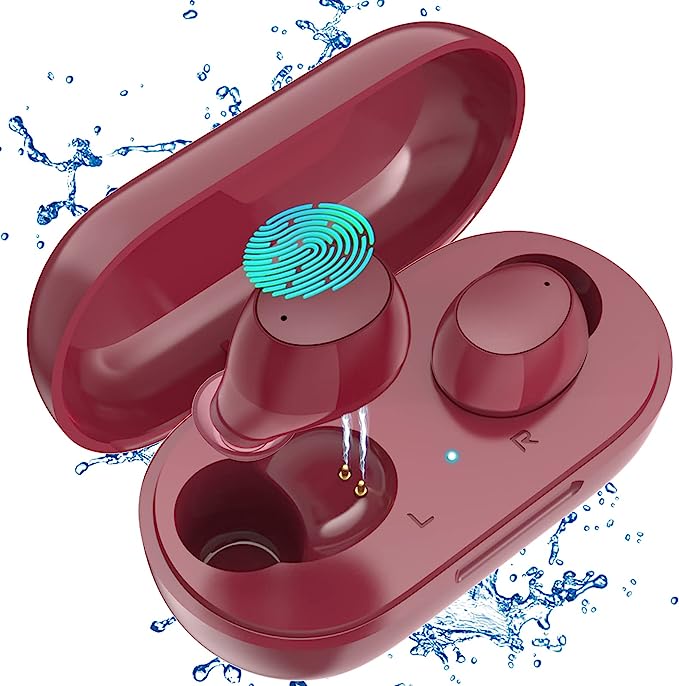miumiupop XY30 Wireless Earbuds: Long Battery Life and Smart Touch Control
Update on March 20, 2025, 11:37 a.m.
The crackle of a poorly connected radio, the hiss of a worn-out cassette tape – these were the hallmarks of portable audio not so long ago. Today, we live in an era of unprecedented wireless freedom, with tiny earbuds delivering crystal-clear sound directly to our ears. The miumiupop XY30 wireless earbuds are a prime example of this technological leap, offering a blend of convenience, performance, and affordability. But what makes these little devices tick? Let’s explore the fascinating science behind the features that bring your music, podcasts, and calls to life.

The Promise of All-Day Listening: Unpacking Battery Technology
One of the primary concerns with any wireless device is battery life. Nobody wants their music to cut out mid-song or their important call to drop unexpectedly. The XY30 earbuds address this with a combined playtime of 12 hours – 4 hours from the earbuds themselves and an additional 8 hours provided by the charging case. But what does this actually mean?
The key lies in understanding battery capacity, measured in milliampere-hours (mAh). Think of mAh like the size of a fuel tank in a car. A larger tank (higher mAh) means you can drive (or listen) for longer before needing to refuel (recharge). Each XY30 earbud contains a 30mAh battery, while the charging case boasts a significantly larger 400mAh battery.
The charging case acts like a portable power bank for your earbuds. When you place the earbuds inside, they automatically begin to recharge, drawing power from the case’s larger battery. This process is similar to how you might use a portable charger to top up your phone’s battery while on the go. The case itself is recharged via a cable, typically taking about an hour to reach full capacity. The 60+days standby time reflects the efficiency of the battery and charging circuity.
But battery capacity isn’t the only factor influencing playtime. The efficiency of the components, particularly the Bluetooth chip, plays a crucial role.

Bluetooth 5.2: The Invisible Conductor
Bluetooth is the wireless technology that allows your earbuds to communicate with your phone, tablet, or computer. It’s like an invisible cable, transmitting audio data over short distances using radio waves. But not all Bluetooth is created equal. The XY30 utilizes Bluetooth 5.2, the latest iteration of this technology, offering several significant advantages over older versions like Bluetooth 4.2.
Think of Bluetooth versions like lanes on a highway. Bluetooth 4.2 might be a two-lane road, while 5.2 is a superhighway with multiple lanes, allowing for more data to flow simultaneously and at higher speeds. This translates to:
- Faster Data Transfer: This is particularly important for high-quality audio streaming and minimizing latency (the delay between the audio source and what you hear).
- Increased Range: Bluetooth 5.2 offers a more robust connection over longer distances, up to 10-15 meters (in an environment without obstacles) for the XY30. This means you can move around more freely without experiencing dropouts.
- Lower Power Consumption: This is a huge benefit for battery-powered devices like earbuds. Bluetooth 5.2 is designed to be incredibly energy-efficient, allowing your earbuds to last longer on a single charge. This is achieved through features like “Connectionless Broadcasts,” which allow devices to communicate more efficiently without needing to establish a full connection.
- More stable connections: Reduced signal interference.
The combination of a larger battery capacity in the charging case and the power efficiency of Bluetooth 5.2 is what allows the XY30 to achieve its impressive 12-hour total playtime.
Effortless Interaction: The Magic of Touch Controls
Gone are the days of fiddling with tiny buttons on your earbuds. The XY30, like many modern wireless earbuds, features touch controls. A simple tap, double-tap, or long-press on the earbud’s surface allows you to control playback, answer calls, and even adjust the volume. But how does this work?
The secret lies in capacitive touch sensing. Capacitive sensors detect changes in capacitance, which is the ability of a material to store an electrical charge. Your finger, being a conductor of electricity, alters the capacitance of the sensor when it comes into contact with the earbud’s surface.
The earbud’s internal circuitry is designed to recognize these changes in capacitance and translate them into specific commands. For example:
- A single tap: Might be programmed to play or pause music, or answer an incoming call.
- Precise user instructions: Referencing the user manual for specific touch gestures, we can say for example, “A double-tap on the right earbud skips to the next track, while a double-tap on the left earbud returns to the previous track.”
- A long press: Might activate a voice assistant or adjust the volume.
This technology allows for a sleek and minimalist design, eliminating the need for physical buttons that can be cumbersome and prone to wear and tear.
Sound Delivered: A Primer on Digital Audio and Earbuds
While the provided information doesn’t delve into the specifics of the XY30’s audio hardware (driver type, frequency response, etc.), it’s important to understand the basics of how digital audio is delivered to your ears.
Your phone or computer stores music as digital data – a series of 0s and 1s. This digital data needs to be converted into an analog signal, which is what our ears can actually hear. This conversion is performed by a Digital-to-Analog Converter (DAC). The quality of the DAC can significantly impact the overall sound quality.
The analog signal is then sent to the earbud’s driver, which is essentially a tiny loudspeaker. The driver vibrates, creating sound waves that travel through the air and into your ear canal.
The size and type of driver, as well as the earbud’s acoustic design, all influence the sound quality. Larger drivers can generally produce more bass, while different driver types (dynamic, balanced armature, etc.) have their own sonic characteristics.
It’s important to note that due to the lack of specific audio specifications for the XY30, it’s difficult to make definitive statements about its sound quality. However, we can make some educated assumptions based on typical earbud design and the use of Bluetooth 5.2. We can assume that the XY30 likely uses a dynamic driver, the most common type in consumer earbuds, due to its cost-effectiveness and ability to deliver decent bass response.
We can also infer that the XY30 likely supports at least the standard SBC (Subband Coding) audio codec, which is mandatory for all Bluetooth audio devices. It may also support AAC (Advanced Audio Coding), which is commonly used by Apple devices and offers better sound quality than SBC at similar bitrates. However, without confirmation from the manufacturer, this remains an assumption. The choice of codec impacts how the audio is compressed and transmitted wirelessly, with higher-quality codecs generally preserving more detail and dynamic range.
Designed for your ear: Physical Noise Isolation
The XY30’s in-ear design plays a significant role in both comfort and sound quality. By fitting snugly within your ear canal, the ear tips create a physical seal that blocks out external noise. This is known as passive noise isolation, and it’s different from active noise cancellation (ANC), which uses electronic circuitry to actively counteract external sounds.
Passive noise isolation is surprisingly effective at reducing ambient noise, allowing you to hear your music more clearly at lower volumes. This is not only more enjoyable but also better for your hearing health, as you’re less likely to crank up the volume to overcome external noise. The effectiveness of passive noise isolation depends on the fit of the ear tips. A good seal is crucial, and the XY30 likely includes multiple sizes of ear tips to accommodate different ear shapes. Finding the right fit is essential for both comfort and optimal sound isolation.

The charging case LED display
A seemingly small but highly practical feature of the miumiupop XY30 is the LED display on the charging case. This display provides a clear and immediate indication of the remaining battery life of both the earbuds and the case itself. No more guessing games or sudden power outages!
The technology behind this is relatively simple. The charging case contains a microcontroller that monitors the voltage levels of the batteries in both the earbuds and the case. Based on these voltage levels, the microcontroller estimates the remaining battery percentage and displays it using the LEDs. This provides a user-friendly way to stay informed about your power status, ensuring you’re always prepared for your listening sessions.

Conclusion: The Science of Seamless Sound
The miumiupop XY30 wireless earbuds, while seemingly simple devices, are packed with sophisticated technology. From the energy-efficient Bluetooth 5.2 chip to the clever capacitive touch controls and the physics of passive noise isolation, every aspect of these earbuds is underpinned by scientific principles.
The long battery life, facilitated by both the charging case and efficient power management, frees you from the constant worry of recharging. The stable Bluetooth connection ensures a smooth and uninterrupted listening experience. And the intuitive touch controls provide effortless management of your music and calls.
While we’ve had to make some assumptions about the specific audio hardware due to the lack of detailed specifications, it’s clear that the XY30 represents a significant step forward in wireless audio technology. It’s a testament to how far we’ve come from the days of tangled wires and bulky headphones, offering a seamless and enjoyable listening experience for the modern world. The focus is less on audiophile-grade sound and more on convenient, reliable, all-day usability. They are a practical tool for enjoying audio content on the go.
